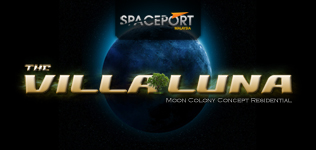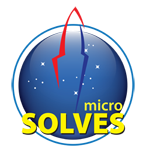 |
 |
 |
 |
 |
 |
 |

| SPACEPORT MALAYSIA | ||||||||||
Spaceport Malaysia is a center of commercial spaceflight for research, education & space tourism. Being a space exploration nation, research in space had always been one of the main sectors to develop in Malaysia. With its relation with tourism, this is seen as a well-blended industry benefiting two sectors together. Therefore, Spaceport Malaysia is developed to promote space tourism and aerospace activity. Lead by the Malaysian Astronaut, Dato’ Dr Sheikh Muszaphar, Spaceport Malaysia is the brainchild of Space Tourism Society - Malaysia Chapter(STS-MC). Space Tourism Society is a non-profit organization founded by John Spencer, an award winning NASA Space Architect and registered in Los Angeles, California, USA. This collaboration is seen as a magnet to attract the front runners in space industry. With the current advancement in aerospace technology, we believe, Space Tourism and Spaceport will shape the urban development of the 21st century, bringing the aerospace technology and revolution more accessible to the public. The design and development of spaceport also will have to take consideration of space tourism and public spaces. Unlike airport, a spaceport not just be the center transportation but also as both terrestrial and extraterrestrial with the additional edge in technology. It also has to be inventive, unique, and creative with the influence of cultural development in each country and region it exist. The focus would also have to be on the interactive and co-relative between the development of spaceport and the overall development of space tourism which will mark the evolution of the new aerospace era. The concept was based on "space". Space is infinity and no straight lines. The curvature and fluidity represent the journey and experience when travelling to space. The dome-shape departure hall express the exclusivity of the starting of journey. It will be the first experience of the passenger /traveler in their journey. The sky deck green roof will be functioning for astronomical-related activities. AVIATION & SPACE UNIVERSITY
The biggest component in scale to be developed at Spaceport Malaysia, which covers an area of 50 acres is a university called Aviation & Space University (ASU). The university consists of 4 institutes, which are Institute of Aviation & Space Design, Institute of Aviation & Space Science, Institute of Aviation & Space Management, Institute of Aviation & Space Engineering. Organizationally, all the 4 institutes are already in existence.
Institute of Aviation & Space Design Institute of Aviation & Space Design (IASD) is to study & develop arts and design for the promotion & operation in aviation & space, including space architecture & space animation. Currently the Institute is monitoring a space architectural & a space animation assignments.
Institute of Aviation & Space Science Institute of Aviation & Space Science (IASS) is to study the sciences of aviation in space including Space Biotechnology. The Institute will host a space biotechnology laboratory to be manned by international researchers including those from the Space Biotechnology Group of the University of Zurich. This laboratory will carry space biotechnology research utilizing airborne & spaceborne platforms including parabolic flight & suborbital flight. Institute of Aviation & Space Management
Institute of Aviation & Space Management (IASM) is to study & develop the policy & management of commercial aviation & space activities. The Institute will house aviation & space management & policy programs with collaboration with several universities running similar programs & international organizations such as IAASS (International Association for the Advancement of Space Safety).
Parabolic & Suborbital Flight School IASM will also operate Parabolic & Suborbital Flight School, a school for the training & qualification of parabolic & suborbital pilots and passengers. Institute of Aviation & Space Engineering Institute of Aviation & Space Engineering (IASE) is to study & develop the engineering of commercial space vehicles and orbital facilities, including rocketplane & spaceplane. Currently the Institute is monitoring a VTOL suborbital spaceplane development program. The Institute will also host Enterprise Rocketplane Program, the Spaceport Malaysia's own rocketplane program.
|
||||||||||
| VILLA LUNA BUNGALOWS | ||||||||||
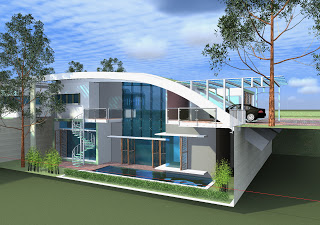 |
||||||||||
| The 2nd biggest component in scale to be developed at Spaceport Malaysia, which covers an area of 30 acres is Lunaville, a housing project that will consist of Villa Luna bungalows, so called because the bungalows were designed with Lunar (Moon) architecture concept. Unlike Earth, Moon has very thin atmosphere that it is not able to completely burn meteors, filter Sun ray & maintain the surface temperature. A colony on the Lunar surface will face meteor impacts and endure extreme temperature (too cold when not facing the Sun & too hot when facing the Sun, due to the thin atmosphere). A method to overcome this inability in Lunar colonization is to build the colonies under the Lunar surface partly or partially. Having part of the accommodation under the Lunar surface will increase the protection of the accommodation from meteor impacts & extreme temperature. Villa Luna was designed with such Lunar architecture concept, where 2/3 of the bungalow is underground. This architecture produces a "greener" bungalow, as both energy & space used in designing & occupying the house is minimized. Being underground, only small amount of energy is wasted due to exposure to Sun, and a steady interior temperature can be generated & maintain with lower energy, while more space over the ground are available to be utilized as usable compound such as garden and car park. Lunar architecture emphasizes the utilization of the most sophisticated communication and energy optimization. Therefore Villa Luna bungalows are equipped with such state-of-the-art smart communication & energy management system. The architecture also emphasizes the interior design to produce the most comfortable and exciting environment as the living is underground. Since the exterior architecture is minimized, more budget can be allocated for the emphasis on interior architecture, and save cost in the construction of the house. Some of the bungalows are being made available for private purchase, while some will be rented as accommodation for space researchers, space tourists, astronauts & visitors. |
||||||||||
| SPACEFLIGHT TERMINAL | ||||||||||
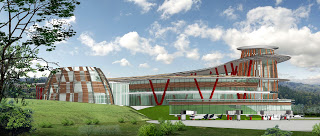 |
||||||||||
| Spaceflight Terminal is to be constructed on the balanced 20 acres of land at Spaceport Malaysia. This terminal, as its name implies, will manage all the parabolic & suborbital flights at Spaceport Malaysia. The terminal will also be equipped with a visitor center where there will be a museum, a space themed park & a shopping mall. ROCKETPLANE PROGRAMS Spaceport Malaysia has its own rocketplane programs, which are the Enterprise Suborbital Rocketplane and Langkasa VTOL Spaceplane. |
||||||||||
| Enterprise Suborbital Rocketplane | ||||||||||
 |
||||||||||
| The prototype of Enterprise suborbital rocketplane, called Black Sky is being developed in Flensburg, Germany by Talis Enterprise, while its rocket propulsion system is being tested in Langenthal, Switzerland by Swiss Propulsion Laboratory. Enterprise Suborbital Rocketplane: http://langkasa-norul.blogspot.com/2012/04/enterprise-suborbital-rocketplane.html |
||||||||||
| Langkasa VTOL Spaceplane | ||||||||||
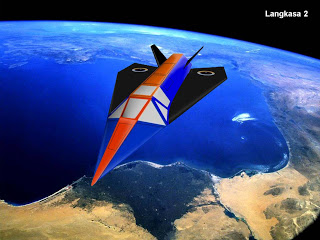 |
||||||||||
| Langkasa VTOL Spaceplane is the pioneering program to develop VTOL spaceplanes as the next generation commercial suborbital spaceplanes. This program is pioneered and led by Norul Ridzuan Zakaria. 2 conceptual designs being studied are Langkasa 2 & Langkasa SOLVE 50. Langkasa 2: http://langkasa-norul.blogspot.com/2012/04/langkasa-2-small-vtol-suborbital.html Langkasa SOLVE 50: http://langkasa-norul.blogspot.com/2012/04/langkasa-solves-suborbital-low-cost-low.html |
||||||||||
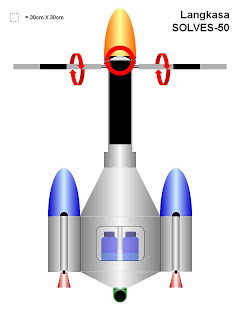 |
||||||||||
| The Projects | ||||||||||
|
||||||||||
|
||||||||||
|
||||||||||
